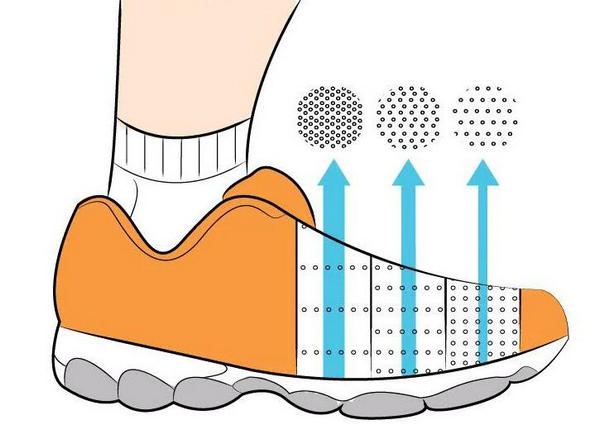The secret of shoe breathability: the tester tells you how to choose good breathable shoes
Choosing shoes with good breathability is essential for maintaining comfort and preventing issues like sweaty feet and unpleasant odors. Here are some tips to help you select shoes that offer excellent breathability:
1. Look for breathable materials: Shoes made from breathable materials allow air to circulate around your feet, reducing moisture buildup. Opt for shoes constructed from materials like mesh, canvas, or certain types of knit fabrics. These materials facilitate air exchange and enhance breathability.
2. Check for ventilation features: Some shoe designs incorporate ventilation features to enhance breathability. Look for shoes with perforations or mesh panels strategically placed on the upper or sides of the shoe. These features promote airflow and help keep your feet cool and dry.

3. Consider a moisture-wicking lining: Moisture-wicking linings, often made from synthetic materials like polyester or nylon, are designed to draw moisture away from your feet. This helps to keep your feet dry and comfortable, even during intense physical activity. Look for shoes with linings that have moisture-wicking properties.
4. Avoid excessive padding and insulation: While cushioning is important for comfort, shoes with excessive padding and insulation can reduce breathability. Thick layers of padding can trap heat and moisture, leading to sweaty feet. Look for shoes with adequate cushioning but without excessive bulk that might hinder airflow.
5. Choose the right shoe style: Different shoe styles offer varying levels of breathability. For example, open-toe sandals or shoes with large cutouts provide maximum airflow but may not be suitable for all occasions. If you need closed-toe shoes, opt for styles with breathable features such as mesh panels or perforations.
6. Ensure a proper fit: A well-fitting shoe is crucial for overall comfort and breathability. Shoes that are too tight can restrict airflow, leading to sweaty and uncomfortable feet. Conversely, shoes that are too loose may cause rubbing and friction. Make sure to try on shoes and choose the appropriate size and width to ensure a comfortable fit.
7. Consider climate and activity level: The breathability requirements for shoes may vary depending on the climate and your activity level. In hot and humid conditions or during intense physical activity, prioritizing highly breathable shoes becomes even more important. Assess the environmental conditions and the intended use of the shoes when making your selection.
Remember that while breathable shoes are important, proper foot hygiene is equally crucial for maintaining foot health. Regularly clean your shoes and socks, and allow them to dry thoroughly between uses to prevent the buildup of bacteria and odors.

